Weekly Woodcut 11: Early Playing cards in the 1400’s
Before I enter the world of printed books and their woodblock Illustrations I had to mention playing cards. When I thought about this project I hadn’t even considered playing cards. I knew very little about their history but, when you think about it, they were the perfect subject for printing with woodblocks; very much in demand and in need of a cheap method of reproduction.
The whole history of playing cards is completely fascinating and linked with gambling and money, social status and warring families. Card games and games of chance and prediction seeming to echo the random nature of the medieval world and the need to find meaning and direction in such mysterious and unpredictable times.
I have spent hours and hours reading about them when I should have been doing other things!
A lovely little woodcut of a family (?) at play, Rather glad that the lady has the best chair.
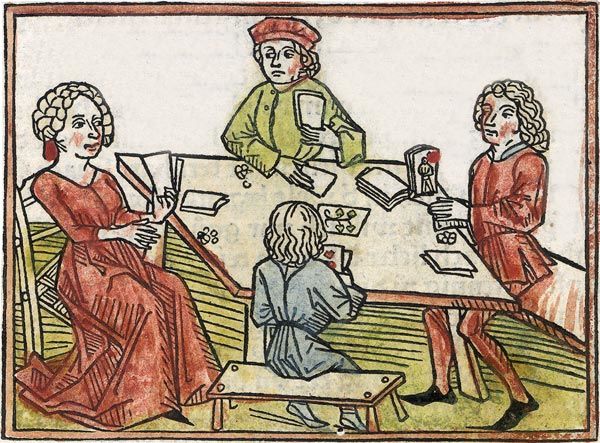
A medieval game of cards where Leafs and Hearts appear to be showing and chips or coins are in play. Master Ingold. Das Buch, das man mennt das Guldon Spil. Printed in Augsburg by Günther Zeiner, 1472.
From an article by the Met Museum “Living by Their Wits: Cards Games in the Middle Ages by
Tim Husband, Curator, Department of Medieval Art and The Cloisters here
Originally painstakingly hand painted they were very varied and some very beautiful. This is the Knave of Cups from the Visconti Tarot approx 1450. Hand painted on card made of layers of paper with a gouache-like opaque paint and gold.
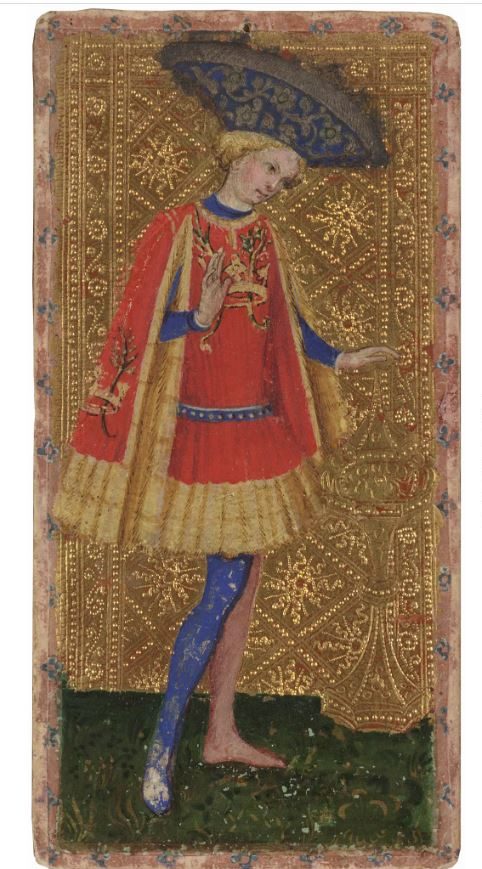
Read more about the deck at the Met Museum here . They have a very interesting collection of playing cards.
When it comes to the printed cards they were a more rough and ready production, simply printed and often hand coloured either with finger painting, yes really, see the “Baraja Morisca” below, or with stencils. They were printed in large sheets and cut into individual cards
Baraja Morisca . A very modern looking set I thought with fine woodcut lines.
Primitive Latin suited pack, possibly of Swiss or German origin for export to Spain, dated by paper analysis as early XV century, which makes this one of the earliest known surviving packs of playing cards. “

The cards show lingering evidence of a suit system derived from early Arabic cards, which in turn became popular throughout Europe from the 15th century. They have been printed from wood blocks and coloured by a technique known as ‘a la morisca’ which involved using the fingers dipped into the pigment.
from Simon Wintle’s very comprehensive World Of Playing Cards site https://www.wopc.co.uk/spain/morsica
I have been struck by how familiar the styles of some of the early designs are, particularly the cutting styles of the faces and the costumes. This was possibly because the same blocks were used over and over again. Then when worn out were replaced and recut, but usually with the same or similar designs.
A gorgeous painting of the game of “Primero” from a little later 1568
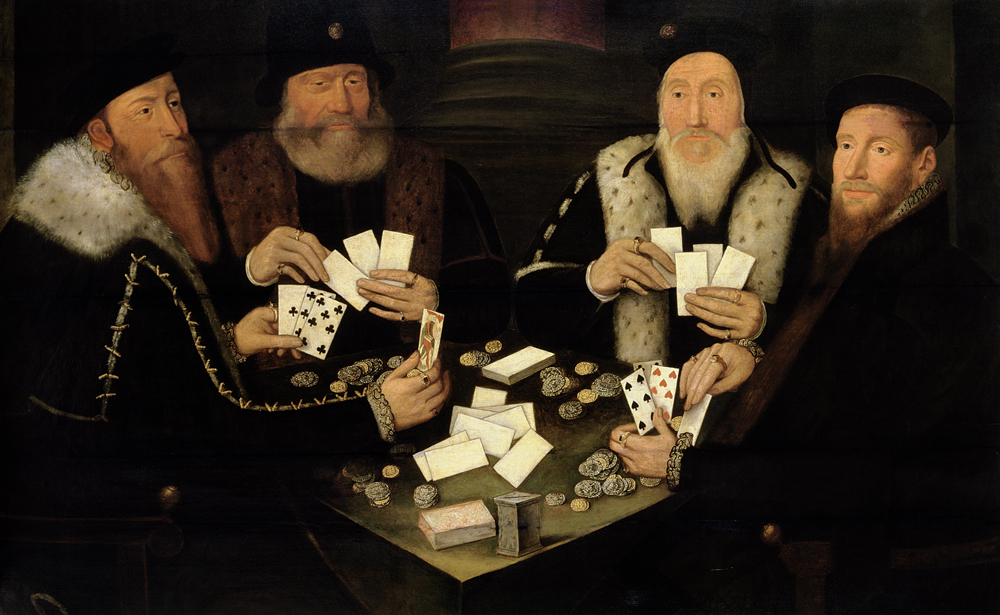
Four Gentlemen of High Rank Playing Primero, by the Master of the Countess of Warwick, c. 1568.
The painting is thought to depict Francis Walsingham, William Cecil, Henry Carey, and Walter Raleigh. © The Right Hon. Earl of Derby / Bridgeman Images.
The face card is the Knave of Hearts, so familiar to us. There is an interesting article about this painting and Primero on Wiki here
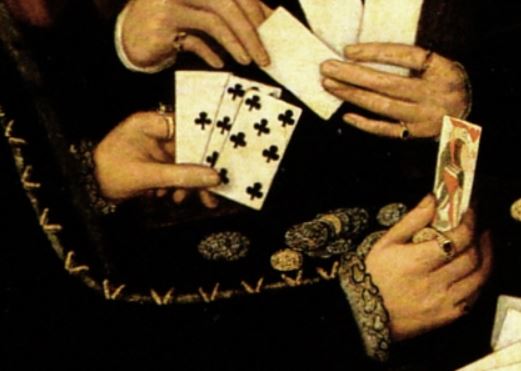
But other cards are strange and rather surreal with some symbols which are hard to understand, the origins of the motifs lost in history. The suits too were odd: hounds, bells, cyclamen, herons, nooses, shields and more.
The Knave of Acorns
But of all the fancy complex cards I particularly liked this simple and rough cut Knave of Acorns from what is called the “The Swiss national suit system” of shields, acorns, hawkbells and flowers
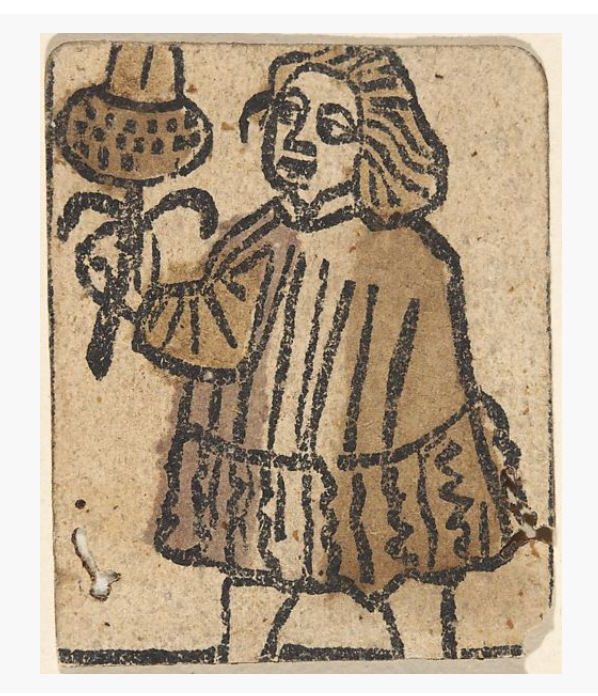
Upper Knave of Acorns
See again from the Met museum here
And then this one, I assume the Knave of Flowers, from the same suit, but at the National Gallery of Art

There is a copy of the full set and more information at World of Playing cards here

A sheet of uncut cards which look as though they are also the same suit from the V&A here
I could go on and on and on about playing cards….but had to stop and make something.
![]()
The Queen Of Acorns: Week 11
For my woodcut this week I decided to create a design inspired by the wonderful Knave of Acorns. My Queen of Acorns has of course an acorn, an accompanying singing spring bird and an anxious squirrel who would like to be considered when it comes to the fate of the acorn. And, just to mix it up a bit, there is a hawkbell.
I feel quite Ok about mixing things as I have now looked at so many, very early, designs. Random elements seem to pop up here and there often probably at the whim of the designer.
Looking anew at playing cards, something so familiar and in many ways so unchanged from the 15th Century, I realise how very strange, very surreal and very mysterious they really are.
After I had made the first one I was reminded so much of Alice in Wonderland.
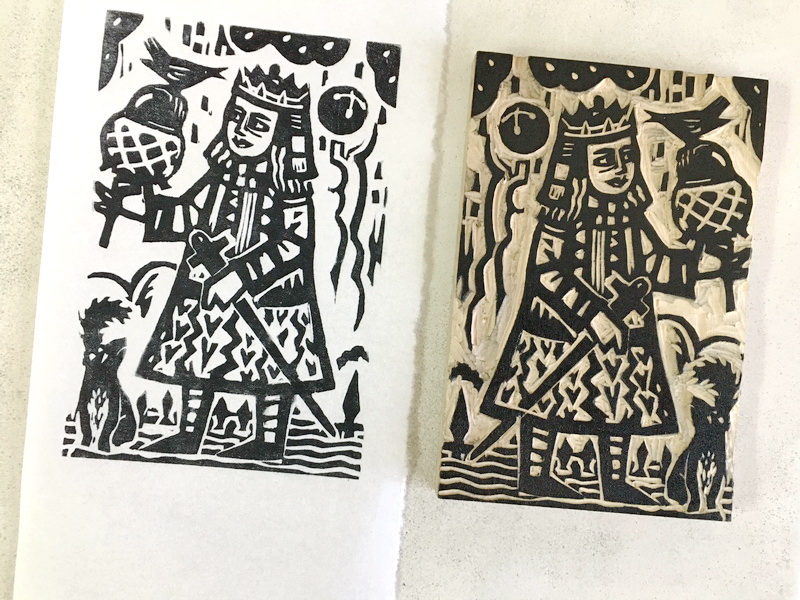
Block and proof.
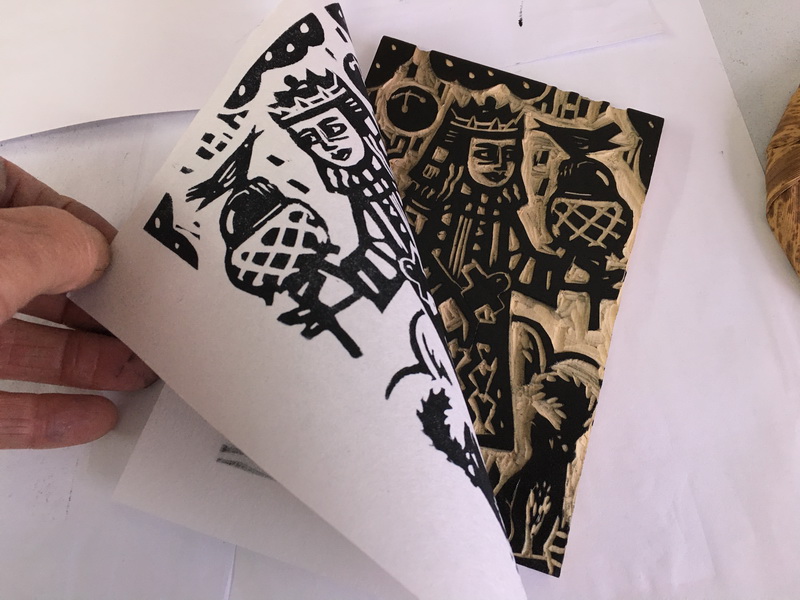
The always interesting reveal.
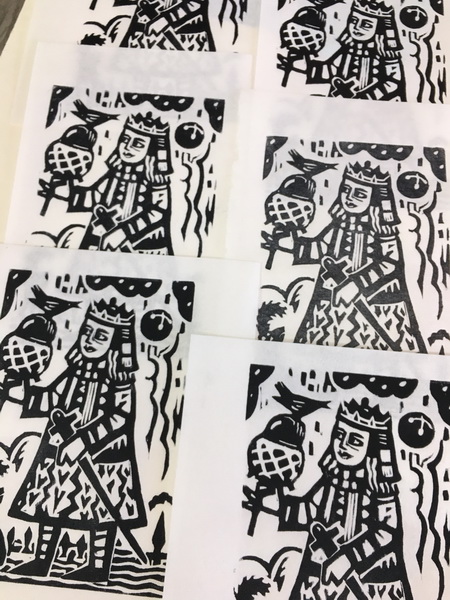
Many queens…
I have tried a bit of quick stencil colouring which has been really enjoyable.
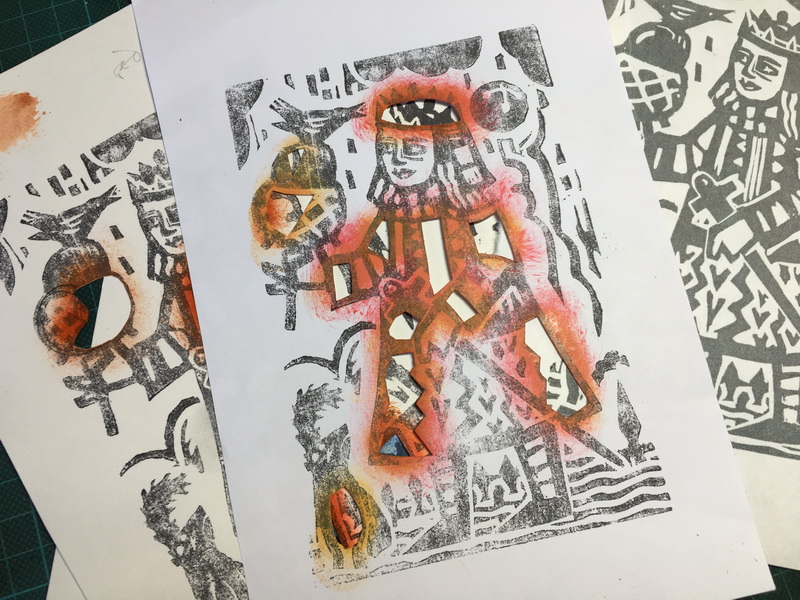
Stencils for the colouring.
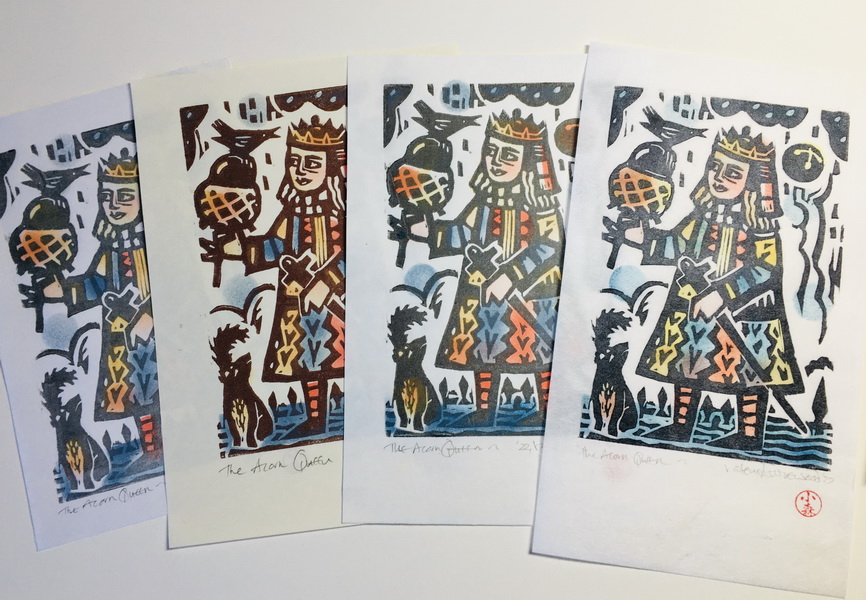
And more queens.
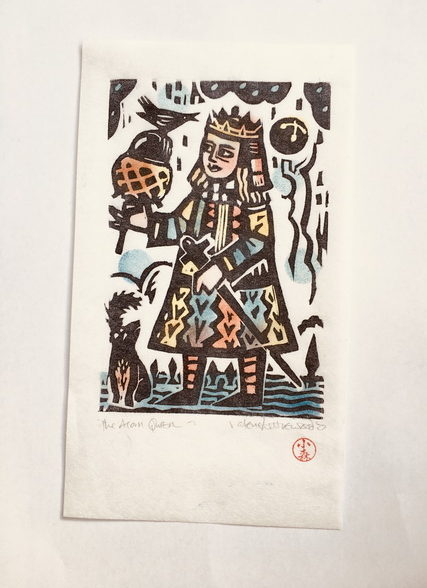
Little Acorn Queen with bird and squirrel…
Woodblock on Japanese paper; Hand Coloured with Stencils; Image size 4 x 6 inches
A “friend” has asked if I might be making another 51 for the full deck.. Um.. no Gay I won’t.. 🙂






Such a pity Val, you could revolutionise a game of polka….. 😀
Very beautiful though Val.
xx